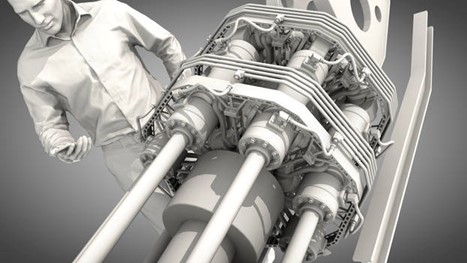



 CN/EN
CN/EN




 CN/EN
CN/EN
The manufacturing industry has witnessed a transformative shift with the advent of 3D printing in manufacturing, a technology that has revolutionized the way products are designed, prototyped, and produced. From intricate medical devices to aerospace components, 3D printing in manufacturing has unlocked new possibilities, enabling manufacturers to create complex shapes with minimal material waste and increased efficiency. As this technology continues to evolve, its impact on the hydraulic industry and the production of hydraulic components is becoming increasingly significant.

The hydraulic industry is a vital part of the broader manufacturing sector, playing a crucial role in various applications across construction, automotive, and industrial machinery. Hydraulic systems rely on the controlled transfer of power through pressurized fluids, enabling the operation of essential components such as valves, pumps, and actuators. These hydraulic components are indispensable in powering heavy machinery, ensuring precision control, and providing the necessary force for various industrial processes.
Amid the global rise of 3D printing technology, China has rapidly emerged as a leader in this field. With significant investments in research and development, along with strong government support, China has made notable advancements in 3D printing materials, technologies, and equipment. The country's 3D printing industry is not only expanding in scale but also excelling in cost efficiency and production speed, providing a competitive edge across various manufacturing sectors, including hydraulics. Particularly in custom manufacturing and small-batch production, Chinese companies are redefining the production of hydraulic components through rapid prototyping and innovative material applications.
As China continues to innovate in the 3D printing space, its impact on the hydraulic industry will deepen. Next, we will explore the specific applications of 3D printing in the manufacturing of hydraulic components and how this technology is driving innovation and transformation in the industry.

1. Custom Component Manufacturing
3D printing in manufacturing has opened up new avenues for the manufacturing of hydraulic components, allowing for the creation of customized and complex parts with unparalleled precision. Traditional manufacturing methods often face limitations in producing intricate geometries or integrating multiple functions into a single component. With 3D printing in manufacturing, manufacturers can now design and produce complex hydraulic valves, pumps, and other hydraulic components tailored to specific requirements, optimizing performance and efficiency.
2. Rapid Prototyping
One of the most significant advantages of 3D printing in manufacturing for hydraulic components is the ability to rapidly prototype and test new designs. Traditionally, prototyping hydraulic parts involved lengthy lead times and substantial costs. However, with 3D printing in manufacturing, manufacturers can quickly iterate and refine designs, enabling faster product development cycles and reducing time-to-market. This accelerated process not only saves time but also allows for more efficient testing and validation, ultimately leading to improved quality of hydraulic components.
3. Cost Efficiency
3D printing in manufacturing offers significant cost-saving benefits, particularly in small-batch production and reducing material waste for hydraulic components. Traditional manufacturing methods often require expensive tooling and molds, making them less cost-effective for low-volume production runs of hydraulic components. With 3D printing in manufacturing, manufacturers can produce hydraulic components on-demand, eliminating the need for costly tooling and minimizing material waste. This cost-efficiency is particularly valuable for companies operating in niche markets or those requiring customized hydraulic solutions.
4. Innovation in Design
3D printing in manufacturing has opened up new frontiers for innovation in the design of hydraulic systems and hydraulic components. By leveraging advanced materials and the ability to create complex geometries, manufacturers can develop hydraulic components with improved efficiency, durability, and performance characteristics. For instance, lightweight yet strong materials can be used to create hydraulic components that reduce the overall weight of hydraulic systems, leading to increased energy efficiency and reduced operational costs.

As the adoption of 3D printing in manufacturing continues to grow, industry events and exhibitions play a crucial role in showcasing the latest innovations and advancements. TCT Asia, one of the leading events in the Asia-Pacific region, brings together industry leaders, experts, and enthusiasts to explore the cutting-edge applications of 3D printing in manufacturing across various sectors, including hydraulics and the production of hydraulic components.
The impact of 3D printing in manufacturing on the hydraulic industry and the production of hydraulic components is undeniable. From custom component manufacturing and rapid prototyping to cost efficiency and innovative design, this technology is transforming the way hydraulic systems and hydraulic components are developed and produced.
As manufacturers continue to embrace 3D printing in manufacturing, they can unlock new opportunities for optimization, innovation, and competitive advantage. Whether you're a seasoned industry professional or an aspiring innovator, attending events like TCT Asia can provide valuable insights into the latest advancements in 3D printing in manufacturing and help you stay ahead of the curve in this rapidly evolving landscape.